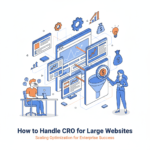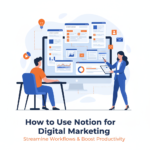
Creating Urgency and Scarcity: Tactics to Motivate Immediate Action
Introduction
Urgency and scarcity are two powerful psychological triggers that drive consumers to take immediate action. Whether in e-commerce, SaaS, or digital marketing, businesses use these tactics to increase conversions, reduce hesitation, and maximize revenue. By implementing urgency and scarcity effectively, brands can create a compelling reason for customers to act now instead of delaying their decision.
In this guide, we’ll explore proven tactics to create urgency and scarcity, backed by psychological principles and real-world examples.
1. Understanding the Psychology of Urgency and Scarcity
a) The Fear of Missing Out (FOMO)
FOMO is a psychological phenomenon where individuals feel anxious about missing a valuable opportunity. This drives people to act quickly when they see limited-time offers or exclusive deals.
b) Loss Aversion
People are more motivated by the fear of losing something than by the possibility of gaining something. By emphasizing what customers might lose if they don’t act, businesses can increase conversions.
c) Decision Paralysis and Urgency
When customers face too many choices, they may delay decisions. Introducing urgency simplifies the decision-making process and encourages immediate action.
2. Using Time-Limited Offers to Drive Urgency
a) Flash Sales
Short-term discounts (e.g., 24-hour sales) create a sense of urgency, encouraging impulse purchases.
b) Countdown Timers
Displaying countdown timers on websites or emails reinforces the time-sensitive nature of an offer.
c) Seasonal and Holiday Promotions
Holiday-themed urgency (e.g., “Black Friday Deals End in 12 Hours”) boosts conversions during peak shopping seasons.
d) Early Bird Pricing
Offering discounted rates for early buyers encourages customers to take immediate action before prices go up.
e) Limited-Time Bonuses
Providing free add-ons, extended warranties, or exclusive content for a short period incentivizes purchases.
3. Creating Scarcity with Limited Availability
a) Low Stock Alerts
Displaying “Only 3 Left in Stock” on product pages or ads creates a fear of missing out and pushes customers to buy immediately.
b) Exclusive Memberships and Waitlists
Offering limited spots in loyalty programs or early access lists increases demand and exclusivity.
c) Limited-Edition Products
Scarcity works well for limited-edition items, where once the stock is gone, it’s gone for good.
d) Ticketed Events with Limited Seating
Webinars, workshops, and physical events often use limited availability to drive registrations.
e) Geographic Exclusivity
Offering region-specific promotions or availability makes a product feel more valuable and rare.
4. Combining Urgency and Scarcity for Maximum Impact
a) One-Day Limited Stock Sales
Mixing time sensitivity with low stock messaging enhances urgency (e.g., “Only 5 Left – Sale Ends Tonight!”).
b) Limited-Time Coupons with Expiring Discounts
Providing promo codes that expire within a short time frame motivates quick action.
c) Real-Time Purchase Notifications
Showing live purchase updates (“John just bought this item 5 minutes ago”) increases urgency and trust.
d) Cart Expiration Alerts
For e-commerce, sending reminders that items will be removed from a cart soon encourages checkout completion.
e) Waitlist Priority Access
Letting customers know they’ll lose priority access if they don’t act now enhances scarcity and exclusivity.
5. Best Practices for Ethical and Effective Implementation
a) Avoid Fake Urgency
Creating false scarcity (e.g., fake stock alerts) can erode trust and harm brand credibility.
b) Be Transparent About Limitations
Clearly state why an offer is limited to maintain trust and authenticity.
c) Use Personalization
Tailoring urgency messages based on user behavior (e.g., “Your saved item is selling fast!”) increases effectiveness.
d) Optimize for Mobile Users
Ensure countdown timers, limited-stock messages, and urgency-based CTAs display properly on mobile devices.
e) Track and Optimize Performance
Use A/B testing to determine which urgency and scarcity tactics work best for your audience.
Conclusion
Urgency and scarcity are highly effective tools in marketing when used correctly. By combining psychological triggers, well-timed offers, and ethical practices, businesses can significantly increase conversions and sales.
Key Takeaways:
Use FOMO, loss aversion, and decision paralysis to influence customer behavior.
Implement time-limited offers, countdown timers, and seasonal sales to drive urgency.
Leverage low stock alerts, exclusive memberships, and limited editions to create scarcity.
Combine urgency and scarcity for a stronger impact (e.g., expiring discounts on low-stock items).
Stay ethical by maintaining transparency and avoiding fake scarcity tactics.
When executed properly, urgency and scarcity can transform hesitant shoppers into confident buyers, boosting overall business performance.
Author



